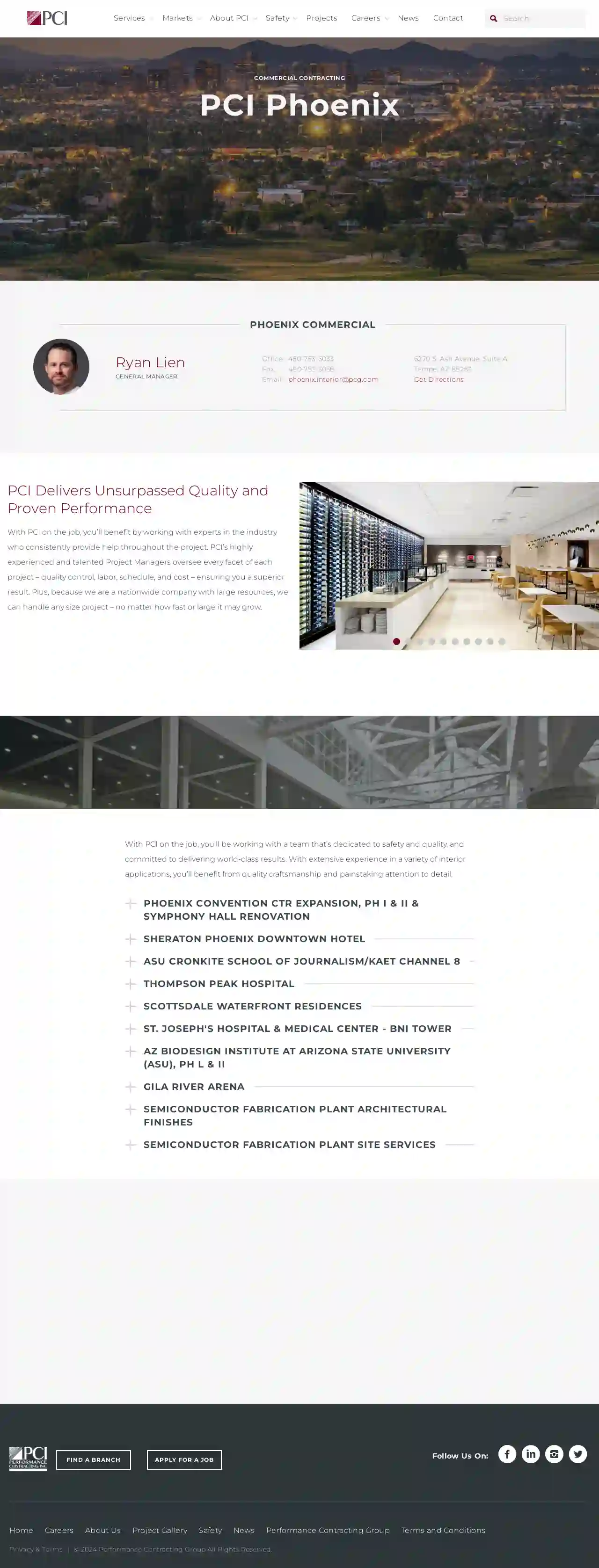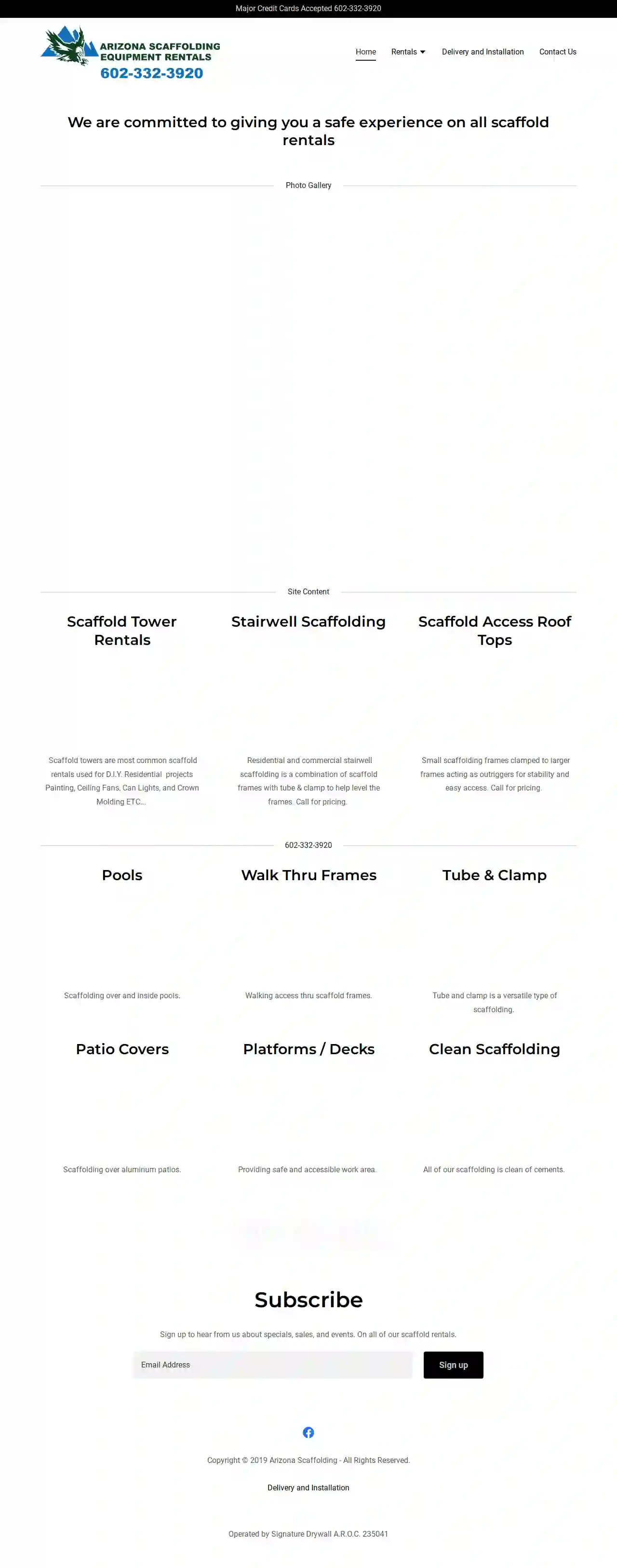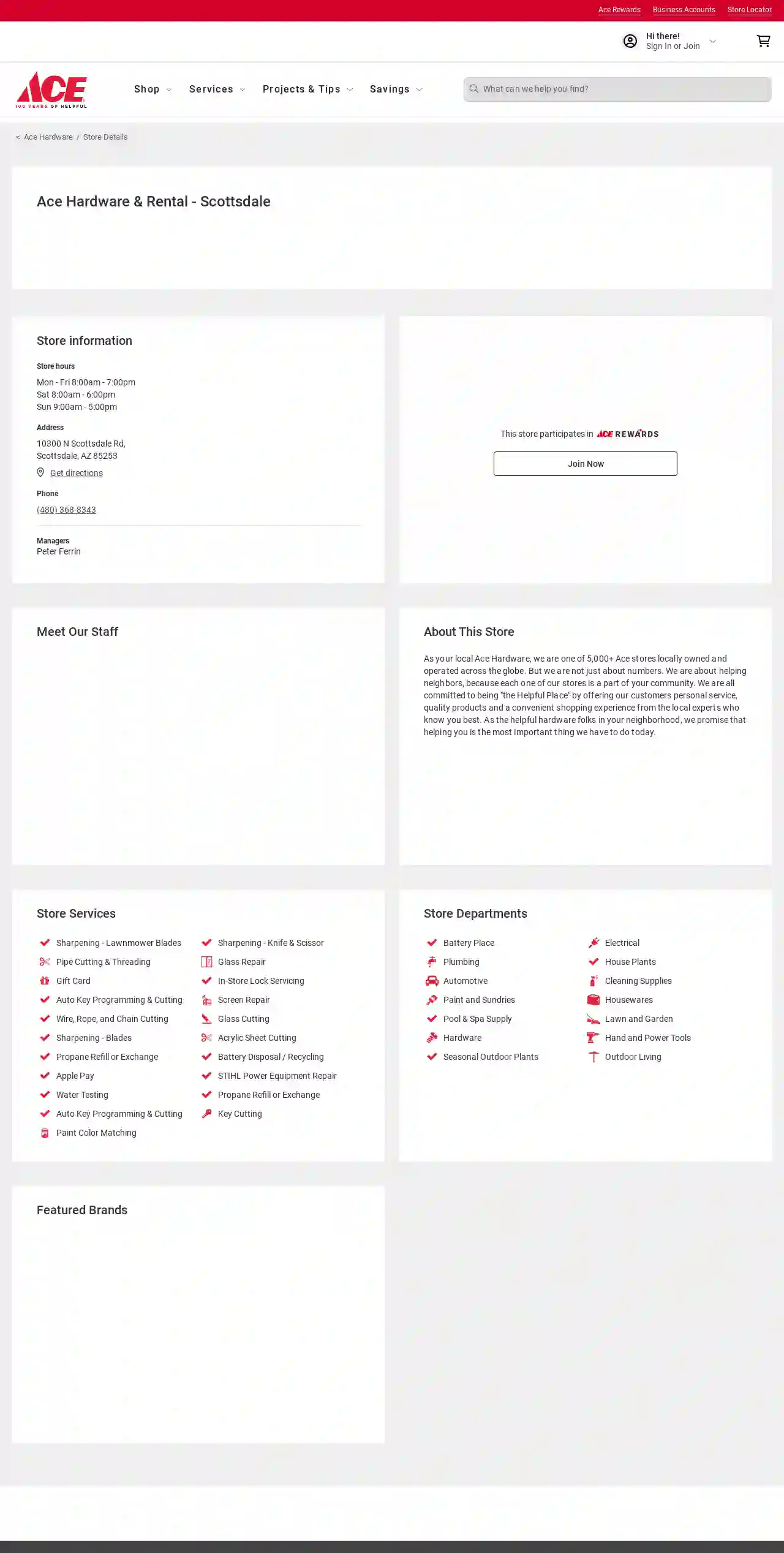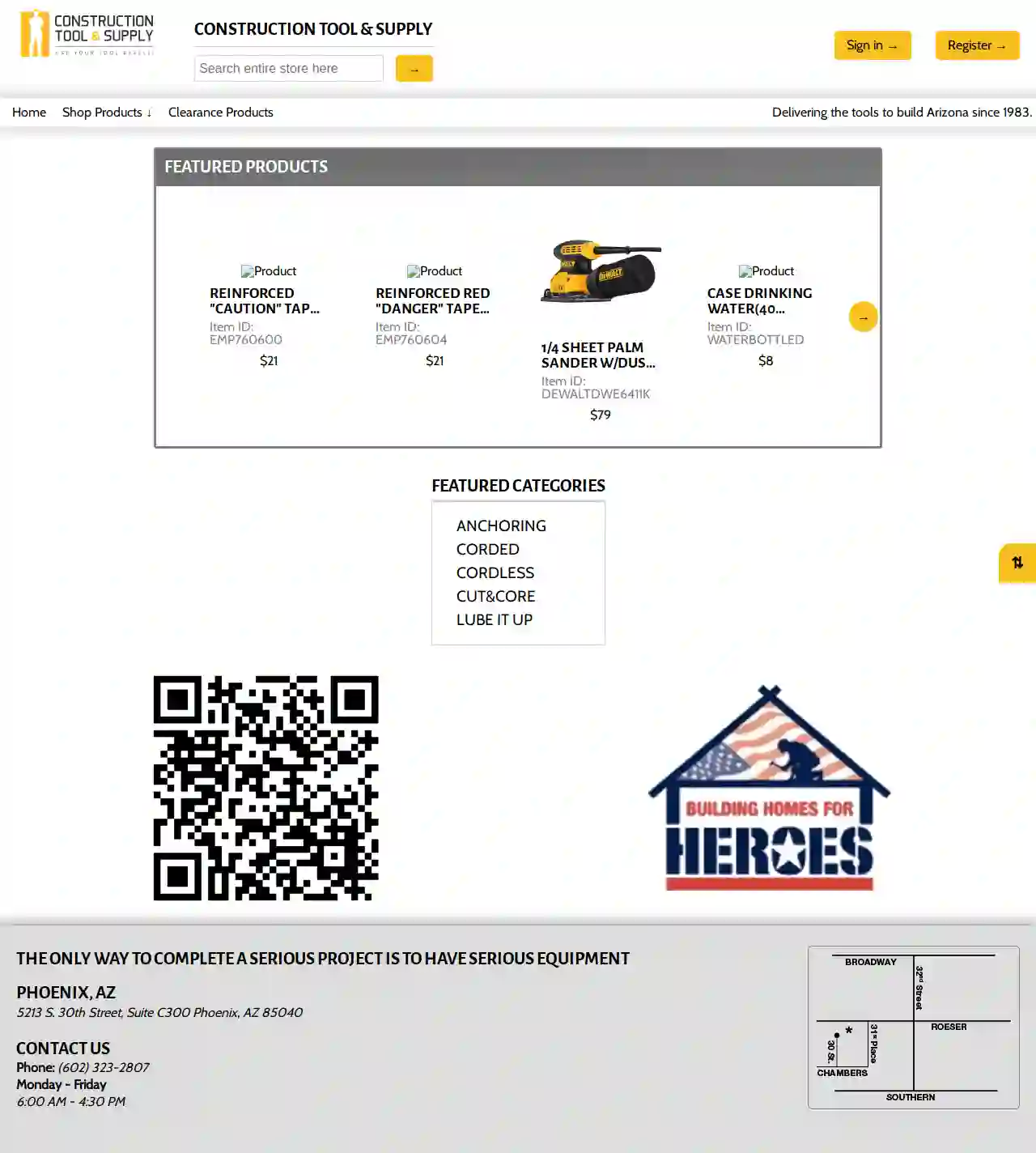Scaffolding Rental Clarkdale
Best Scaffolding Rental Services in Clarkdale
Get up to 3 Scaffolding Rental quotes for your project today! Compare profiles, reviews, accreditations, portfolio, etc... and choose the best service.

Performance Contracting Inc
419 reviewsTempe, AZ, 6270 S. Ash Avenue, Suite A, Phoenix, 85283, USPerformance Contracting, Inc. is a top-tier specialty contractor in the United States, providing exceptional services and products to industrial, commercial, and non-residential sectors. With a wide range of related services, PCI establishes itself as a true 'one-stop-shop' contractor, ensuring customers receive comprehensive solutions tailored to their specific needs.
- Services
- Why Us?
- Accreditations
- Our Team
- Testimonials
- Gallery
Get Quote
Arizona Scaffolding
47 reviews3087 E Pecos Rd, Phoenix, 85048, USArizona Scaffolding is a leading provider of safe and accessible scaffolding solutions for residential and commercial projects. With a commitment to safety and customer satisfaction, they offer a range of services including scaffold tower rentals, stairwell scaffolding, and access to roof tops. Their team is dedicated to providing clean and well-maintained scaffolding equipment, ensuring a hassle-free experience for clients. Arizona Scaffolding serves various cities and offers delivery and installation services for all their products.
- Services
- Why Us?
- Accreditations
- Gallery
Get Quote
Ace Hardware & Rental - Scottsdale
4.4227 reviews10300 N Scottsdale Rd, Scottsdale, 85253, USAt Ace Hardware, we're more than just a hardware store. We're your local experts, committed to helping neighbors like you with quality products, personal service, and a convenient shopping experience. As one of over 5,000 Ace stores globally, we're proud to be a part of your community. Our mission is to be 'the Helpful Place' by offering expert advice, a wide selection of products, and a commitment to customer satisfaction. Whether you're a homeowner, DIY enthusiast, or contractor, we're here to help you get the job done right.
- Services
- Why Us?
- Our Team
- Gallery
Get Quote
Sunbelt Rentals
4.271 reviewsTucson, USSunbelt Rentals: Your One-Stop Shop for Equipment Rentals Sunbelt Rentals is a leading provider of equipment rentals in the United States and Canada. We offer a wide variety of equipment for rent, including aerial work platforms, scaffolding, ladders, cranes, boom trucks, scissor lifts, low-level access, manlifts, and more. Whether you're a homeowner tackling a DIY project or a contractor working on a large-scale construction project, Sunbelt Rentals has the equipment you need to get the job done right. We're committed to providing our customers with the best possible experience. That's why we offer a wide range of services, including: 24/7 customer support Fast and reliable delivery Competitive pricing Expert technical support We also have a team of experienced professionals who can help you choose the right equipment for your needs. Contact us today to learn more about our services and how we can help you succeed.
- Services
- Why Us?
- Gallery
Get Quote
JT Thorpe
511 reviews1060 Hensley Street, Richmond, 94801, USJT THORPE is your trusted partner for comprehensive solutions in refractory, scaffolding, fireproofing, insulation, and more. With over 100 years of industry experience, we deliver exceptional results with unmatched expertise and commitment to quality. Experience the JT THORPE difference: 100+ years of proven expertise in softcraft solutions, combined with cutting-edge technology and unwavering commitment to safety, quality, and reliability.
- Services
- Why Us?
- Gallery
Get Quote
Vault Scaffold
43 reviewsMaryland, USWelcome to Vault Scaffold Vault Scaffold is proud to offer the finest Scaffolding in the World, UpRight Scaffold. Don’t settle for less: UpRight Scaffold is the Original, is the safest and utilizes the finest Irish Craftsmanship in every piece made. Still the world innovator in Aluminum Scaffold, Vault Scaffold with UpRight Scaffold is the Choice of CFO’s, CEO’s, Safety managers and front line workers for its light weight, ease of use, safety features and for its 70 year track record of providing the safest Aluminum Scaffold in the world. We have multiple warehouses to ship from, so your order arrives quickly, and most orders ship within 24 hours. Parts order usually ship the same day. Original Upright Parts or Original Vault parts, we have the stock for your field repair needs. Custom designs are not a problem as we offer design and engineering solutions to all of your high reach tower needs. Call us today to discuss your needs.
- Services
- Why Us?
- Gallery
Get Quote
Farwest Insulation Contracting
4.85 reviewsAnaheim, CA, 1220 S. Sherman St., 92805, USFarwest Insulation Contracting is a privately held family business specializing in Commercial & Industrial Mechanical Insulation, Scaffolding, Painting & Industrial Coatings, Firestopping, Asbestos Abatement, and Electric Heat Tracing. The company was incorporated on September 11, 2003, and began operations on December 17, 2004 after acquiring the operating assets of Thorpe Insulation Company. Thorpe Insulation was founded in 1948 in Southern California and quickly established itself as the premier insulation contractor on the West Coast. Today, the company employs more than 300 employees across the Southwestern United States.
- Services
- Why Us?
- Accreditations
- Our Team
- Testimonials
- Gallery
Get Quote
SDB Contracting Services
4.431 reviews123 Main St, Anytown, USA, 12345, USSDB Contracting Services is a solutions-oriented service provider that specializes in crating and rigging services. With a focus on growth and opportunity, the company offers a range of services tailored to meet the needs of its clients. From general to specialized services, SDB ensures that all projects are completed with precision and professionalism. The company's mission is to provide top-notch solutions that enhance the quality of life for its clients and the community.
- Services
- Why Us?
- Accreditations
- Our Team
- Testimonials
- Gallery
Get Quote
Phoenix Scaffolding & Equipment
4.433 reviews4143 E. Winslow Ave., Phoenix, 85040, USFor over 30 years, Phoenix Scaffolding has been supplying contractors with quality scaffolding and shoring solutions to meet their job requirements. We offer an economical, competitive product selection including planks, safety equipment, floats, rope, wire, tape, hard hats, gloves, water jugs, and more. Phoenix Scaffolding can help you get your project done effortlessly and economically. Contact us today, our professional rental and sales experts are anxious to help you with all of your scaffolding, shoring and equipment needs. Why choose Phoenix Scaffolding? Scaffold, Shoring, and Swing Stage Specialists Phoenix Scaffolding is proud of our outstanding safety record and all our scaffolding is OSHA Compliant. Our knowledgeable, experienced staff will provide for your scaffolding needs in a highly safe and professional manner. Our company is experienced in all types of scaffold builds, including high rise structures and other advanced, time and security restricted projects. Statewide Estimating and Installation Our estimators are knowledgeable in the scaffolding field and will give you a competitive quote for your projects. We have experienced scaffold erectors for your installation and dismantle needs anywhere in the state of Arizona. Engineering Available Our engineers are capable of generating a safe working platform to meet your needs. We can quote and engineer most jobs from a set of plans. For more difficult jobs, our estimators can view the job site to take precise measurements and provide a fair, competitive quote. Rental and Sales We have a wide selection of scaffolding, planks, 5/16" wire rope and shoring including our safety equipment, harnesses, life lines, lanyards, rope grabs and more for sale. Our rentals include scaffolding, shoring, swing stage, trash chutes, bleachers, aluminum stringers and aluminum joists, and more. Ready to rent some equipment? Call Now
- Services
- Why Us?
- Testimonials
- Gallery
Get Quote
Construction Tool & Supply
564 reviews123 Main Street, Phoenix, 85001, USAbout Construction Tool AZ Construction Tool AZ is your one-stop shop for all your construction tool needs. We offer a wide selection of high-quality tools from top brands at competitive prices. Our knowledgeable staff is always available to help you find the right tools for your project. We are committed to providing our customers with the best possible service and support. We are a family-owned and operated business with over 10 years of experience in the construction industry. We understand the importance of having the right tools for the job, and we are dedicated to helping our customers succeed. We offer a variety of services to meet your needs, including tool rental, tool repair, and tool sales. We also offer free delivery and pick-up services for our customers in the Phoenix area. We are committed to providing our customers with the best possible service and support. We are a family-owned and operated business with over 10 years of experience in the construction industry. We understand the importance of having the right tools for the job, and we are dedicated to helping our customers succeed.
- Services
- Why Us?
Get Quote
Over 2,353+ Scaffolding Contractors onboarded
Our scaffolding experts operate in Clarkdale & beyond!
ScaffoldingHQ has curated and vetted Top Scaffolding Companies in Clarkdale. Find a top & trustworthy contractor today.
Frequently Asked Questions About Scaffolding Rental
- Contact Your Local Authority: Start by contacting your local council or planning authority.
- Provide Project Details: Be prepared to provide details about the scaffolding (size, location, duration), the project, and any relevant drawings or plans.
- Application and Fees: Complete a permit application form and pay any associated fees.
- Inspection: An inspector may visit the site to verify the scaffolding plans and safety measures. The scaffolding rental company or the erector may be able to assist you with the permit application process.
- All Components: Ensure all the necessary components (tubes, clamps, boards, braces, etc.) are present and in good condition.
- Damage or Defects: Look for any signs of damage, rust, or defects on the scaffolding parts.
- Scaffolding Tag: Verify that the scaffolding tag is up-to-date and shows the last inspection date.
- Safety Features: Check that guardrails, toeboards, and other safety features are included and in working order.
- Save Time: Easily compare quotes from multiple reputable scaffolding rental companies in one place.
- Find Local Providers: Quickly locate scaffolding companies serving your area.
- Get Competitive Rates: Access a network of rental providers, allowing you to compare prices and find the best deal.
- Ensure Safety and Quality: We partner with companies that prioritize safety and adhere to industry standards.
- Access Expert Support: Our customer support team is here to assist you throughout the rental process.
- Residential: Roofing repairs and replacements, siding installations, painting projects, window replacements, gutter cleaning and repairs, chimney repairs, solar panel installations.
- Commercial: Building construction and renovations, facade repairs and cleaning, window cleaning, painting, sign installation, and maintenance of high-rise structures.
- Industrial: Plant maintenance, access to elevated equipment, tank inspections and repairs, bridge repairs, and other industrial construction projects.
- Events: Temporary stages, grandstands, lighting and sound rigging, and platforms for concerts, festivals, and sporting events.
How do I get a permit for scaffolding?
What should I check for when the scaffolding is delivered?
What are the benefits of using a scaffolding directory like ScaffoldingHQ?
What are some common uses for scaffolding rentals?
How do I get a permit for scaffolding?
- Contact Your Local Authority: Start by contacting your local council or planning authority.
- Provide Project Details: Be prepared to provide details about the scaffolding (size, location, duration), the project, and any relevant drawings or plans.
- Application and Fees: Complete a permit application form and pay any associated fees.
- Inspection: An inspector may visit the site to verify the scaffolding plans and safety measures. The scaffolding rental company or the erector may be able to assist you with the permit application process.
What should I check for when the scaffolding is delivered?
- All Components: Ensure all the necessary components (tubes, clamps, boards, braces, etc.) are present and in good condition.
- Damage or Defects: Look for any signs of damage, rust, or defects on the scaffolding parts.
- Scaffolding Tag: Verify that the scaffolding tag is up-to-date and shows the last inspection date.
- Safety Features: Check that guardrails, toeboards, and other safety features are included and in working order.
What are the benefits of using a scaffolding directory like ScaffoldingHQ?
- Save Time: Easily compare quotes from multiple reputable scaffolding rental companies in one place.
- Find Local Providers: Quickly locate scaffolding companies serving your area.
- Get Competitive Rates: Access a network of rental providers, allowing you to compare prices and find the best deal.
- Ensure Safety and Quality: We partner with companies that prioritize safety and adhere to industry standards.
- Access Expert Support: Our customer support team is here to assist you throughout the rental process.
What are some common uses for scaffolding rentals?
- Residential: Roofing repairs and replacements, siding installations, painting projects, window replacements, gutter cleaning and repairs, chimney repairs, solar panel installations.
- Commercial: Building construction and renovations, facade repairs and cleaning, window cleaning, painting, sign installation, and maintenance of high-rise structures.
- Industrial: Plant maintenance, access to elevated equipment, tank inspections and repairs, bridge repairs, and other industrial construction projects.
- Events: Temporary stages, grandstands, lighting and sound rigging, and platforms for concerts, festivals, and sporting events.